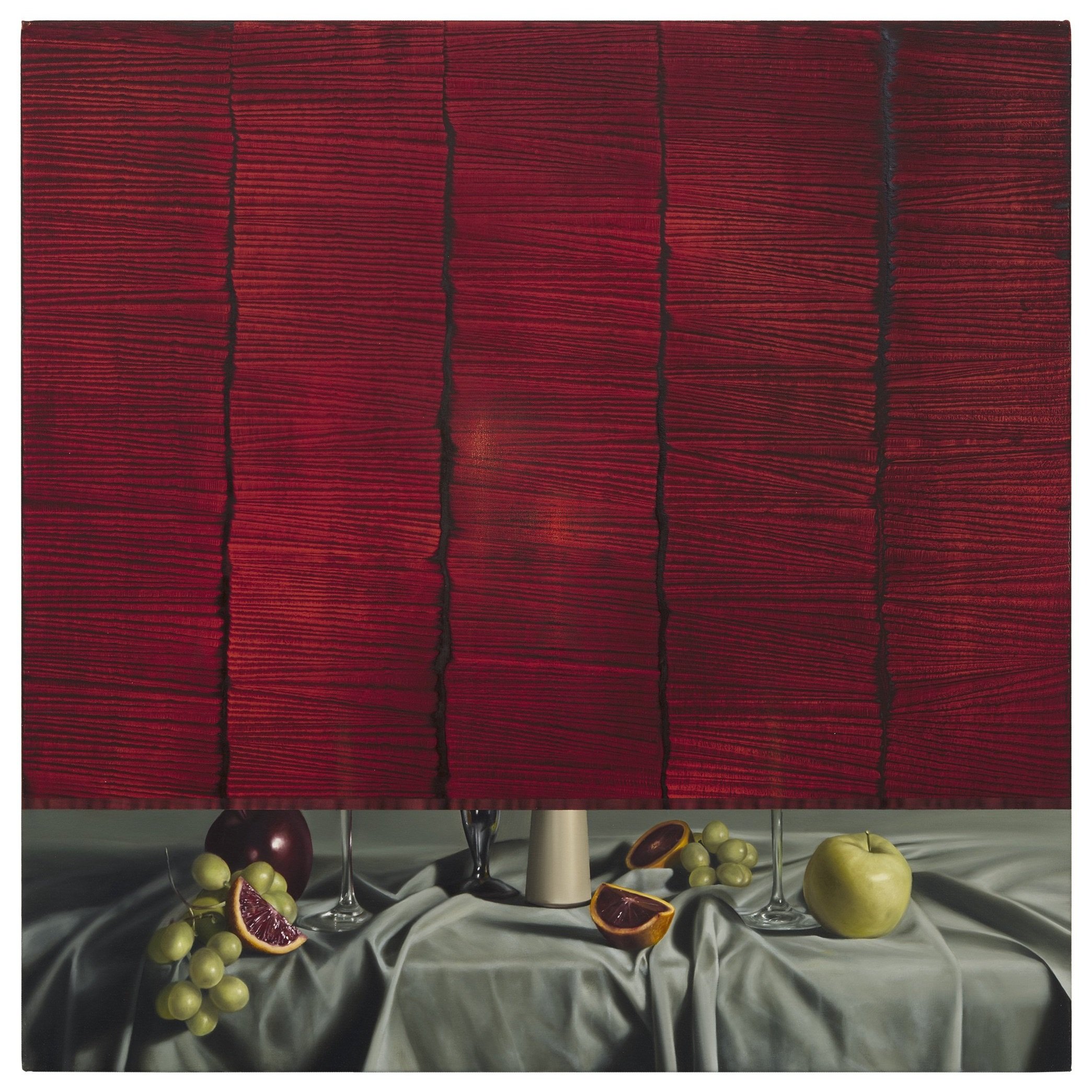Danielle Fretwell

"I want my work to act as a buffer between the known and unknown, opening up a dialogue around the reliability of our sources and exploring the construction of truth in both society and in painting."
Our interview with Danielle Fretwell discusses their process and thoughts behind their work.
Interview by Richard Starbuck.
Could you tell us a bit about yourself and your background? Where did you study?
I grew up in Western Massachusetts and have lived in MA my whole life. As a child, I was always encouraged to make art and became attached to painting quite early on. I received my BFA from Endicott College in 2018 and my MFA from Boston University in 2021. I now live and work in the Greater Boston area.
Your paintings feature layers that both reveal and conceal, creating an interesting dynamic. Can you share how this idea came about and what you hope viewers take away from these hidden elements?
I want my work to act as a buffer between the known and unknown, opening up a dialogue around the reliability of our sources and exploring the construction of truth in both society and in painting. It could be through the use of veils, cropping of the image, or simply a lack of pictorial light that conceals the subjects and ultimately challenges the viewer's access to these spaces.
In the paintings where a still life is covered by a veil, I paint the entirety of the image before deciding what will get layered over. This is so important because even though I’m interested in themes of deceit and illusion, I want my work to have honesty. Having the entire image painted, even if I’m the only one who knows it, allows for truth when I say that there really is something that lies beneath the veil.
The fine details in your work, like the stitched areas, add a sense of mystery. How do these details fit into your themes of deception and reality, and what methods do you use to create such intricate effects?
These details emerged when I began experimenting with printmaking in grad school a few years ago. I started pressing fabric in thinned paint to record its texture and the result felt much like a cyanotype, almost ghostly, something that was once there but is now considered through visual description. I was also looking at a lot of 17th-19th century trompe l’oeil paintings, entirely captivated by their insistence on proximity and viewership. I wanted to explore this in my own work, by asking the viewer to approach the surface so closely that the illusion of stitches and seams collapses, ultimately encouraging the contemplation of reality.
“Shallow Invitations” at Alice Amati, 2024
“Shallow Invitations” at Alice Amati, 2024
Viewing Room, 2023 Photo by Daniel Browne
Still life with Spring craspedia, 2024
Haven, 2024
Midnight Offerings, 2024
Your art shows a clear influence from 17th-century still-life paintings, with its carefully crafted, timeless feel. How do you use this historical inspiration to address current issues like media influence and the perception of truth in your artwork?
Artists working in this genre throughout history have all nodded to truth with metaphors of temporality and death – something that is promised to all life on earth. I find myself influenced by the motifs of 17th century still-life paintings while also navigating the contemporary approach through more nuanced representation and allusions of death. The subjects I depict in my still-life paintings are frozen in a state of perfection, avoidant of the inevitable effects of time.
Time manifests in various ways in still-life painting, notably in the exploration of slow looking. Through the use of veils in my paintings, I advocate for a critical examination and encourage viewers to adjust their pace. I want to prevent immediate revelation, prompting an understanding to unfurl gradually. Such contemplative slowness is particularly pertinent in our current era, where an abundance of information is readily available at our fingertips.
What artwork have you seen recently that has resonated with you?
I really enjoyed Timothy Lai’s show at Josh Lilley Gallery earlier this year when I visited London. The show made me feel like I was intruding on something. The paintings themselves were vibrant and indulgent in their materiality. And, of course, who doesn’t love a good dog painting.
Tell us a bit about how you spend your day / studio routine? What is your studio like?
I share a studio space with my partner who is also a painter. Our studio is on the 5th floor of an old mill building, so we have these massive windows that overlook a river and let in a ton of light. It’s important that the studio feels warm since so much time is spent there. My routine consists of playing an audiobook or podcast since I don’t usually listen to music while painting. It’s like I need half of my brain occupied by a story in order to disconnect during the painfully slow parts of painting.
Is there anything new and exciting in the pipeline you would like to tell us about?
In Spring 2025, I’ll be headed off the Berkshires, MA as the Artist-in-Residence at Long Meadow Art Residency!
All images courtesy of the artist and Alice Amati
Interview publish date: 04/07/2024





